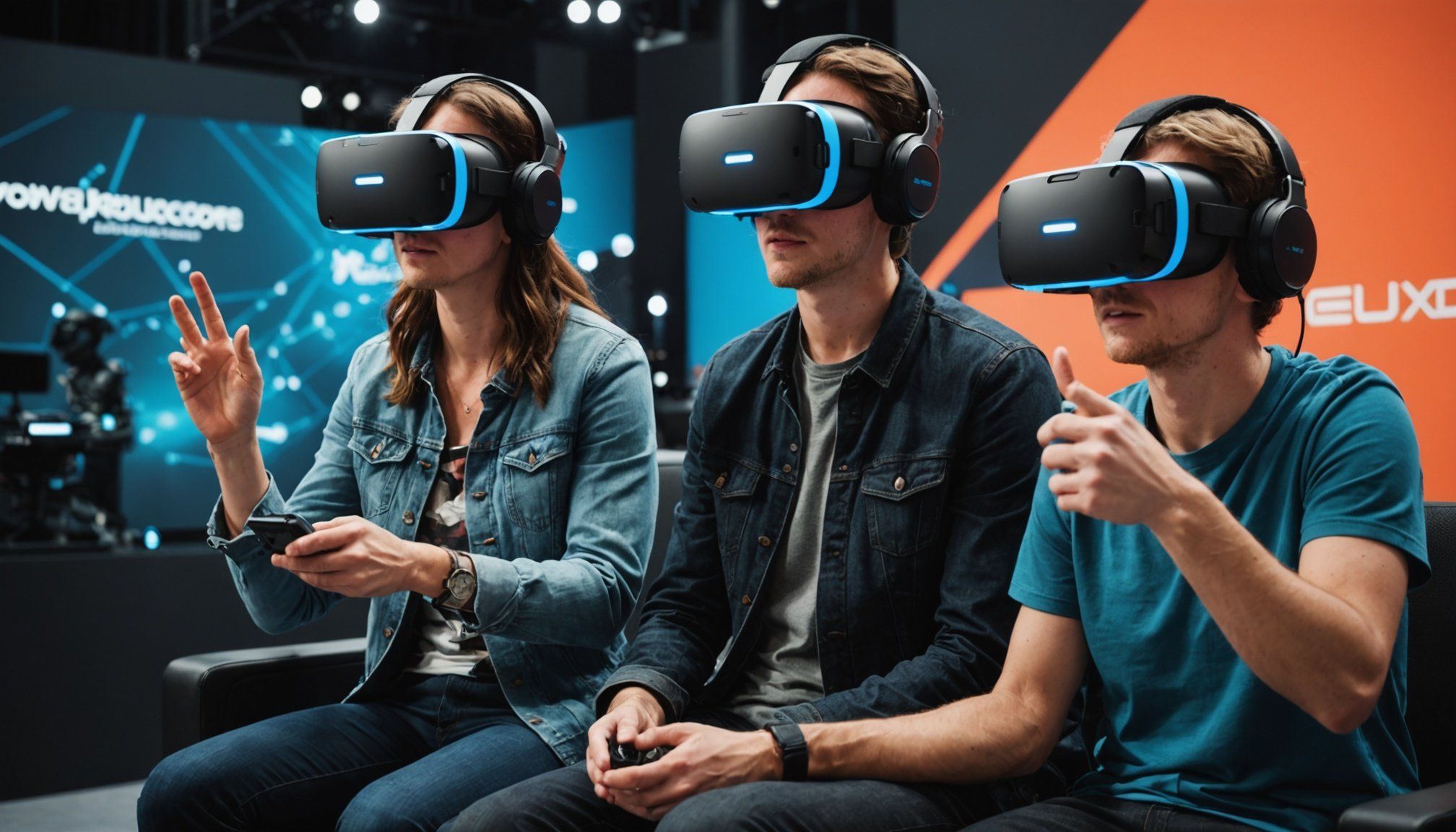Overview of Multiplayer VR Game Design
Understanding multiplayer VR design involves delving into the nuances of game mechanics that can support multiple players effectively. At the core, mechanics must facilitate synchronous interaction among users. This means ensuring that the interactions players have are seamless and contribute positively to the user engagement.
User engagement in VR experiences is paramount. Immersive worlds alone do not suffice; these environments must be coupled with compelling game mechanics. Engaging players requires careful consideration of pacing, challenge, and cooperative or competitive elements that excite users and keep them returning.
Topic to read : Unlocking Haptic Feedback in Mobile AR Gaming: Essential Strategies and Innovative Solutions Revealed
One can learn substantially from successful multiplayer VR games. Case studies often highlight innovations in both mechanics and engagement strategies. For example, games like “Rec Room” have demonstrated the power of user-generated content and cross-platform play in bolstering a game’s appeal and longevity. By allowing players to create and collaborate, such games elevate the standard of multiplayer VR design.
When incorporating these elements, it is crucial to analyze how they contribute to a holistic experience. Captivating gameplay combined with a strong community component creates not only a game but a thriving social hub, essential for modern multiplayer VR design.
This might interest you : Elevate Your Adventure: Unleash the Art of Realistic Foliage Creation in Exploration Games
Current Trends in VR Technology
Keeping up with VR technology trends is essential for developers aiming to create captivating immersive experiences. The landscape of VR is continuously evolving, largely due to advancements in hardware. Devices are becoming more powerful, with greater processing capability and improved graphics, enhancing the fidelity and realism of VR game design.
Hardware innovations like lighter headsets and more intuitive controllers are making VR more accessible, allowing for longer sessions and better user comfort. This shift is crucial for maintaining player engagement, as comfort significantly affects how long users are willing to stay immersed.
Simultaneously, new software trends are reshaping user experience. Enhanced graphics engines and more sophisticated artificial intelligence systems allow developers to create more intricate and responsive environments. Keeping up with these trends ensures that developers can leverage the latest tools for creating compelling virtual experiences.
Staying updated on technology shifts is also vital beyond just hardware and software. Developers must regularly engage with communities and follow industry news. By understanding how these technological trends impact VR capabilities, designers can craft experiences that meet and exceed user expectations, ensuring their games remain relevant and engaging.
User Experience Design Principles for VR
In modern VR interaction, designing with an emphasis on user experience is imperative. The seamless integration of intuitive interfaces significantly impacts users’ retention rates and overall satisfaction. Key elements of this integration include responsive and natural control schemes that allow users to engage freely within virtual environments.
Principles of Intuitive Interface Design
Creating interfaces that users can navigate effortlessly is crucial. Important aspects include reducing cognitive load by utilizing familiar gestures and layouts that mimic real-world interactions. The aim is for users to achieve goals within the environment without undue distraction.
Creating Immersive User Experiences
Immersive experiences stem from environments that encapsulate users, tapping into sensory engagement. Techniques such as spatial audio and haptic feedback play a pivotal role, making VR worlds come alive. It’s about creating a reality that players feel rather than merely see.
Understanding User Behavior in VR
Analyzing how users interact in virtual settings can lead to more refined VR interaction designs. Through data analysis, developers can pinpoint areas to improve user engagement. This iterative process ensures an ongoing enhancement of virtual experiences, aligning with user needs and expectations.
Innovative Ideas for Future VR Experiences
The future of VR experiences promises exciting innovations, particularly through design innovation and novel gameplay concepts. One compelling avenue is the development of new gameplay ideas that redefine multiplayer interactions. Imagine virtual environments where players seamlessly collaborate in real-time, creating dynamic narratives that evolve with player choices.
Integration of AI and machine learning is another frontier. These technologies can personalize experiences by adapting to player behavior, enhancing challenges, and delivering tailored content. The potential for VR environments to become smarter and more intuitive means players can look forward to truly immersive interactions driven by their unique playstyles.
Exploring cross-platform multiplayer experiences is also on the horizon. As VR becomes more ubiquitous across devices, developers are increasingly focusing on creating ecosystems where players can interact regardless of their hardware. This move towards inclusivity enhances accessibility, allowing broader participation in multiplayer worlds.
Such innovations not only offer captivating experiences but also set a new standard for what players can expect in VR gaming. By pushing the boundaries of interactivity and connectivity, these developments hold the potential to revolutionise the way we perceive and engage in virtual realities.
Expert Insights and Case Studies
Gleaning from expert interviews and case studies reveals invaluable lessons in successful VR design strategies. Industry leaders often emphasize the importance of innovation and user-centric design—two core factors in creating enduring VR experiences.
Highlighting Industry Leaders
Prominent figures in VR, such as from companies like Oculus and Valve, underscore a singular focus on user experience and advanced game mechanics. Their approaches often combine cutting-edge technology with intuitive design, ensuring that players are both challenged and fully immersed.
Analyzing Successful VR Projects
Examining projects like “Half-Life: Alyx” and “Beat Saber” showcases how strategic use of VR technology trends and robust design principles can captivate audiences. Such games are lauded for their seamless interfaces and engaging content that keeps users returning.
Lessons Learned from Expert Experiences
Interviews with industry veterans highlight the importance of adaptability and continual learning. Successful developers frequently share insights on overcoming obstacles and innovating under constraints, reinforcing the value of resilience in game development.
These case studies serve as invaluable guides, illustrating both the potential pitfalls and the golden paths for aspiring VR designers to follow in their careers.
Practical Tips and Resources for Developers
Developers venturing into VR game development should arm themselves with powerful design tools and adhere to best practices that foster creativity and efficiency. Selecting the right software can significantly influence the development process, with tools like Unity and Unreal Engine offering comprehensive capabilities for VR design. These platforms facilitate the construction of immersive realities by providing resources that streamline multiplayer VR environment creation.
Collaboration in these environments demands meticulous coordination. Following best practices involves maintaining clear communication and version control. Utilizing platforms such as GitHub ensures seamless development across teams, allowing for synchronized updates and teamwork, which is essential to achieving coherent multiplayer experiences.
Continual learning is crucial in staying ahead. Accessing VR development resources such as online courses, webinars, and community forums can enhance skills and expose developers to the latest industry practices. Engaging with communities and participating in discussions promote knowledge exchange and innovation, invaluable for navigating the evolving landscape of VR technology.
By leveraging these tools and practices, developers can effectively build captivating and engaging VR experiences, propelling the medium forward and ensuring the creation of dynamic and interactive multiplayer VR environments.











